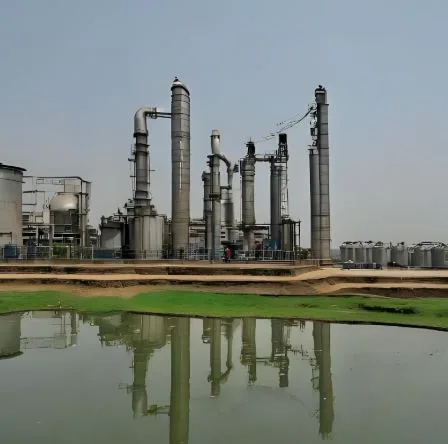What Is Rainwater Harvesting and Why Should You Care About It in 2025?
Have you ever looked at all that rain pouring off your rooftop during monsoon and thought, “What a waste”? In India, where summers are dry and water bills keep rising, it’s a question more people are asking.
That’s where rainwater harvesting comes in. It’s not a fancy new invention — it’s a basic idea: collect rainwater, filter it, and use it when you need it. Whether you live in a city flat or a rural home, storing rainwater is becoming one of the smartest things to do in 2025.
And here’s the good news — the government wants to help you do it.
How Does Rainwater Harvesting Work at Home?
It’s simpler than you might think. Here’s how it usually goes:
- Rain falls on your roof.
- The water flows through a pipe into a rainwater filter (this removes dust, leaves, etc.).
- Clean water is stored in a tank or directed into the ground to recharge groundwater.
With tools like the Rainy Filter FL 80 or Rainy Filter FL 150, you don’t even need electricity or complicated setups. These filters clean the rainwater as it flows — no fuss — making them a perfect addition to any rainwater collection system.
You can use the harvested water for:
- Gardening
- Flushing
- Washing vehicles
- Or just recharging the soil beneath your house
Is It Worth It? Here’s What You Get from the Government
Yes — because not only do you save water, but the Indian government will pay part of your setup cost.
Here’s a look at popular schemes in 2025 that support rainwater harvesting:
1. Jal Shakti Abhiyan – “Catch the Rain” Campaign
- A central government initiative
- Focus on rooftop rainwater collection
- Offers technical support + implementation help through local bodies
- Especially active in 700+ water-stressed districts
2. MGNREGA – Rural Water Conservation Funding
- In rural areas, rainwater harvesting structures like check dams, recharge wells, and ponds are built under this scheme
- 100% government-funded labor
3. Delhi Government Subsidy
- ₹20,000 to ₹50,000 for RWH systems in homes, schools, and commercial properties
- RWH mandatory for plots over 500 sq. m
- Apply via Delhi Jal Board website
4. Karnataka BWSSB Rebate Program
- If you install a certified rainwater harvesting system, you can get monthly water bill rebates
- Government grants of ₹50,000 for institutions
- Apply through BWSSB or Urban Water Mission offices
5. Tamil Nadu RWH Mandate & Support
- Mandatory rainwater harvesting since 2003
- In 2025, renewed incentives for flats and group housing societies
- Technical help and part funding available via municipal offices
6. Maharashtra Rural Water Scheme
- Farmers and village households in Vidarbha and Marathwada get ₹15,000 to ₹25,000 to install rooftop filters and recharge pits
- Apply through Gram Panchayats or the state water department
What Kind of Setup Do You Need?
Here’s a basic list to get started:
- Clean rooftop (no chemical coatings)
- Pipes or channels to direct water
- Filter (Rainy Filter FL 80, Rainy Filter FL 150, or Rainy Filter FL 500 depending on roof size)
- Storage tank or soak pit
- A way to clean and check the system before and after monsoon
If your society or area is installing a group system, you might also qualify for group subsidies under local programs.
What Rainwater Filter Should You Choose in 2025?
If you’re not sure which filter fits your space, here’s a quick guide:
| Filter | Best For |
| Rainy Filter FL 80 | Small homes or 1BHKs |
| Rainy Filter FL 150 | Medium houses or duplexes |
| Rainy Filter FL 250 | Large independent homes |
| Rainy Filter FL 500 | Apartments, schools, commercial buildings |
These filters are non-electric, low-maintenance, and highly effective. No need for pumps or special tools.
Check them out on RainyFilters.com
Why Should You Do This Now — Not Later?
The water you save during monsoon can:
- Last through dry months
- Reduce your dependency on tankers
- Lower your water bills
- Recharge the soil under your home
- Cut down urban flooding by reducing runoff
In 2025, with the right support and better filters, setting up rainwater harvesting is easier and more affordable than ever.
Take the First Step Today
You don’t need to do everything at once. Even installing a small rooftop filter can make a big difference.
Start with this checklist:
- Know your rooftop size
- Choose a certified filter (Rainy Filter FL 80, FL 150, etc.)
- Install a tank or soak pit
- Contact your local water board or municipality to ask about subsidies
- Maintain the filter before each monsoon
Final Note:
Water scarcity isn’t just a rural problem anymore — it’s at your doorstep. But the solution is already falling from the sky. With help from the government, affordable filters, and growing awareness, 2025 is the year to act.
Check out trusted filters and accessories at RainyFilters.com
And don’t forget to explore your state-specific subsidy — it’s your right, and it could save you thousands.




